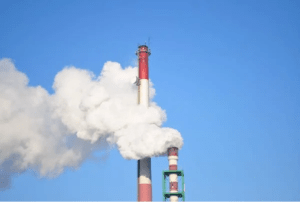
I. Introduction
Welcome to an exciting review on global warming that aims to provide you with valuable insights and knowledge, maybe a revision, about this pressing environmental issue that has garnered significant attention worldwide.
Global warming is characterized by the increase in the Earth’s average surface temperature and its oceans due to the accumulation of greenhouse gases in the atmosphere.
The release of greenhouse gases, such as carbon dioxide and methane, mainly from human activities like burning fossil fuels, contributes significantly to the rising global temperatures.
Grasping the realities surrounding global warming is vital as we strive to tackle the challenges it poses to our planet and future generations.
In this article, we will explore 32 startling review points about global warming that highlight the severity and urgency of the issue. These facts shed light on various aspects of global warming, including its causes, consequences, and impacts on different ecosystems.
II. A Review on Global Warming Causes in 2024
1. The Greenhouse Effect and its Role:
The greenhouse effect is a natural process that helps regulate the Earth’s temperature. It occurs when certain gases, known as greenhouse gases, trap heat from the sun in the Earth’s atmosphere. Without the greenhouse effect, the Earth would be too cold to support life as we know it.
However, human activities, such as burning fossil fuels and deforestation, have increased the concentration of greenhouse gases in the atmosphere, leading to an enhanced greenhouse effect and global warming.
2. Carbon Dioxide Emissions and Their Impact :

Carbon dioxide (CO2) is the primary greenhouse gas responsible for human-induced global warming. The burning of fossil fuels, such as coal, oil, and natural gas, for energy production, is the largest source of CO2 emissions.
Deforestation and land-use changes also contribute to CO2 emissions by reducing the Earth’s capacity to absorb CO2 through photosynthesis. The increasing levels of CO2 in the atmosphere trap more heat, causing the Earth’s temperature to rise.
3. Methane Emissions and Their Role :
Methane (CH4) is another potent greenhouse gas that contributes to global warming. It is emitted during various human activities, including the production and transport of coal, oil, and natural gas.
Livestock farming, particularly cattle and rice cultivation, is a significant source of methane emissions. Landfills and the decomposition of organic waste also release methane into the atmosphere.
Methane has a much higher warming potential than carbon dioxide, although it stays in the atmosphere for a shorter time.
4. Deforestation and its Effect :

Deforestation refers to the clearing of forests for various purposes, such as agriculture, logging, and urbanization.
Trees play a crucial role in regulating the Earth’s climate by absorbing CO2 through photosynthesis. When forests are cleared, the stored carbon is released back into the atmosphere as CO2, contributing to global warming.
Deforestation also reduces the Earth’s capacity to absorb CO2, further exacerbating the greenhouse effect.
5. The Role of Fossil Fuels:
Fossil fuel combustion, primarily for energy production, is the largest contributor to global warming. Burning coal, oil, and natural gas releases significant amounts of CO2 into the atmosphere.
The use of fossil fuels in transportation, electricity generation, and industrial processes accounts for the majority of CO2 emissions. Transitioning to cleaner and renewable energy sources is crucial to mitigating global warming.
6. The Influence of Industrial Processes:
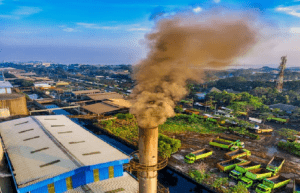
Industrial processes, such as cement production, chemical manufacturing, and metal production, emit greenhouse gases.
These processes often release CO2 as a byproduct or use other potent greenhouse gases in their operations.
Industrial emissions contribute to global warming and need to be addressed through improved technologies and cleaner production methods.
7. Impact of Agricultural Practices:
Agricultural practices, including livestock farming, rice cultivation, and the use of synthetic fertilizers, contribute to global warming. Livestock farming produces methane through enteric fermentation (digestive processes in animals) and manure management.
Rice cultivation in flooded fields generates methane as organic matter decomposes under anaerobic conditions. Synthetic fertilizers release nitrous oxide (N2O), another potent greenhouse gas, during their production and use.
8. Contribution of Land Use Changes :

Land use changes, such as deforestation, urbanization, and conversion of natural habitats into agricultural land, release significant amounts of CO2. Forests, wetlands, and other ecosystems store carbon, and their destruction or degradation leads to the release of stored carbon into the atmosphere.
Land use changes also disrupt natural processes that help regulate the Earth’s climate, contributing to global warming.
9. Role of Waste Management :
Improper waste management, particularly the decomposition of organic waste in landfills, generates methane emissions.
Methane can be captured and used as a source of energy, reducing its release into the atmosphere. Implementing effective waste management strategies, such as recycling, composting, and anaerobic digestion, can help mitigate methane emissions and reduce the impact of global warming.
Addressing the causes of global warming requires a multi-faceted approach, including transitioning to renewable energy sources, reducing deforestation, adopting sustainable agricultural practices, implementing cleaner industrial processes, and improving waste management systems.
III. A Review on Global Warming Consequences in 2024
The consequences of global warming are far-reaching and have significant implications for various aspects of our planet. Here are some facts about the consequences of global warming:
10. Rising Global Temperatures and Their Implications:
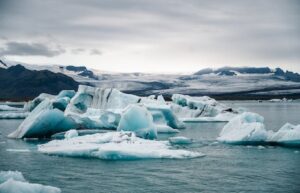
Global temperatures have been steadily increasing over the past century, with the last few decades experiencing the highest temperatures on record. Rising temperatures lead to the melting of glaciers, permafrost, and ice caps, causing sea levels to rise and contributing to the loss of landmass in coastal areas.
Higher temperatures also exacerbate heatwaves, droughts, and wildfires, posing risks to human health, agriculture, and ecosystems.
11. Melting Ice Caps and Rising Sea Levels:
The melting of ice caps and glaciers, particularly in polar regions, contributes to the rise in sea levels.
As the ice melts, it adds water to the oceans, leading to the inundation of coastal areas and increased vulnerability to storm surges and flooding.
Rising sea levels also pose a threat to low-lying islands and coastal communities, displacing populations and causing the loss of habitats.
12. The Impact of Ocean Acidification on Marine Life:
Increased levels of carbon dioxide (CO2) in the atmosphere are absorbed by the oceans, leading to ocean acidification.
Acidification disrupts the delicate balance of marine ecosystems, affecting the growth and survival of coral reefs, shellfish, and other marine organisms that rely on calcium carbonate for their shells and skeletons.
Coral reefs, known as the “rainforests of the sea,” provide essential habitats for numerous marine species, and their decline has profound impacts on biodiversity and coastal protection.
13. Weather Pattern Changes and Extreme Weather Events:
Global warming influences weather patterns, leading to changes in precipitation, wind patterns, and the frequency and intensity of extreme weather events. We are experiencing more frequent and severe heatwaves, droughts, hurricanes, and storms, which can result in widespread destruction, loss of life, and economic damages.
Extreme weather events also disrupt agriculture, water availability, and infrastructure, further exacerbating the consequences of global warming.
14. Impacts on Ecosystems and Biodiversity Loss:
Many ecosystems are sensitive to changes in temperature and precipitation, making them vulnerable to global warming.
Climate change disrupts ecosystems, alters the timing of natural events such as migration and flowering, and affects the availability of resources for plants and animals.
As ecosystems face increasing pressures, there is a higher risk of species extinction, reduced biodiversity, and imbalances in ecological relationships.
15. Threats to Coral Reefs and Marine Ecosystems:

Coral reefs, home to a vast array of marine species, are highly sensitive to temperature changes and ocean acidification.
Warming waters cause coral bleaching, where corals expel the symbiotic algae living in their tissues, leading to their death if the stress persists.
The loss of coral reefs not only affects the biodiversity they support but also impacts fisheries, tourism, and coastal protection provided by these ecosystems.
16. Disruption of Food Production and Global Food Security:
Global warming affects agricultural productivity through changes in temperature, rainfall patterns, and the increased frequency of pests and diseases. Crop yields and livestock productivity may decline in some regions, leading to food shortages, price volatility, and challenges to global food security.
Small-scale farmers, particularly in developing countries, are disproportionately affected by these impacts, exacerbating poverty and inequality.
17. Health Consequences :
Global warming poses risks to human health, including increased heat-related illnesses, respiratory problems due to air pollution, and the spread of vector-borne diseases.
Rising temperatures and changes in precipitation patterns can influence the distribution and prevalence of infectious diseases, such as malaria, dengue fever, and Lyme disease.
Vulnerable populations, including children, the elderly, and those in low-income communities, are most at risk from these health impacts.
18. Economic Implications:

The economic costs of global warming are substantial, affecting sectors such as agriculture, tourism, infrastructure, and insurance. Increased spending on disaster response and recovery, as well as the loss of productivity and livelihoods, can strain national economies and hinder development efforts.
Investing in climate mitigation and adaptation measures is crucial to reducing future economic damage and promoting sustainable development.
These facts highlight the urgent need to address global warming and implement measures to mitigate its consequences.
The scientific consensus emphasizes the importance of reducing greenhouse gas emissions, transitioning to clean and renewable energy sources, protecting ecosystems, and adopting sustainable practices across various sectors to minimize the impacts of global warming.
IV. Efforts and Solutions for Global Warming
19. International agreements and initiatives to combat global warming:
The Paris Agreement, adopted in 2015, is a landmark international treaty aiming to limit global warming to well below 2 degrees Celsius above pre-industrial levels.
The agreement includes voluntary greenhouse gas reduction targets submitted by each participating country, known as Nationally Determined Contributions (NDCs).
Other international initiatives, such as the Kyoto Protocol and the Montreal Protocol, have also played significant roles in addressing global warming and reducing emissions of ozone-depleting substances.
20. Renewable energy sources and their role in greenhouse gas emissions mitigation:
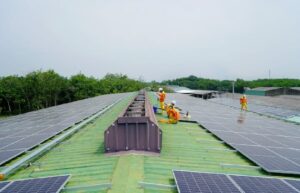
Renewable energy sources, including solar, wind, hydroelectric, and geothermal power, offer clean and sustainable alternatives to fossil fuels. Transitioning to renewable energy is crucial for reducing greenhouse gas emissions and combating global warming.
The falling costs of renewable energy technologies have made them increasingly competitive and viable options for energy production worldwide.
21. Energy efficiency measures and their contribution to mitigating global warming:

Improving energy efficiency in buildings, industries, and transportation can significantly reduce energy consumption and associated greenhouse gas emissions. Energy-efficient technologies, such as LED lighting, efficient appliances, and smart grids, play a crucial role in achieving energy savings and mitigating global warming.
Energy efficiency measures not only help combat climate change but also result in cost savings and improved energy security.
22. Sustainable transportation and its impact on reducing carbon emissions:

Shifting from fossil fuel-powered vehicles to electric vehicles (EVs) and investing in sustainable public transportation can contribute to reducing carbon emissions.
Governments and businesses are increasingly promoting EV adoption through incentives, expanding charging infrastructure, and investing in research and development of advanced battery technologies.
Sustainable transportation options, such as biking, walking, and using public transit, also help reduce greenhouse gas emissions and improve air quality in urban areas.
23. Afforestation and reforestation as means to combat global warming:

Planting trees and restoring forests can sequester carbon dioxide from the atmosphere, helping to mitigate global warming.
Forests act as carbon sinks, absorbing and storing significant amounts of CO2 through the process of photosynthesis.
Reforestation efforts, coupled with sustainable forest management practices, play a vital role in preserving biodiversity, enhancing ecosystem resilience, and combating climate change.
24. Climate adaptation strategies and their importance:
Climate adaptation involves implementing measures to prepare for and respond to the impacts of global warming, such as extreme weather events and sea-level rise.
Adaptation strategies include building resilient infrastructure, developing early warning systems, improving water management, and implementing agricultural practices that withstand changing climatic conditions.
Investing in climate adaptation is crucial for reducing vulnerability, protecting livelihoods, and ensuring the well-being of communities in the face of climate change.
25. The role of individuals and communities in addressing global warming:
Individuals and communities can contribute to addressing global warming by adopting sustainable lifestyle choices, such as conserving energy, reducing waste, and supporting renewable energy.
Education and awareness campaigns play a crucial role in promoting behavioral changes and fostering a collective sense of responsibility towards the environment. Engaging in community initiatives, participating in local climate action groups, and advocating for policy changes can also drive positive change and encourage sustainability.
26. Technological innovations for combating global warming:
Ongoing advancements in technology, such as carbon capture and storage (CCS), advanced renewable energy systems, and sustainable agriculture practices, hold promise for mitigating global warming.
Research and development efforts focus on developing innovative solutions to reduce emissions, increase energy efficiency, and promote sustainable practices across various sectors.
Collaboration between governments, academia, and the private sector is essential for accelerating the deployment of these technologies and driving meaningful change. It is important to note that these facts provide a general overview of global efforts and solutions to combat global warming.
The specific details, progress, and challenges may vary across different regions and countries.
V. Future of Global Warming
27. Predictions and Projections for Future Global Temperature Rise:
Climate models project that if greenhouse gas emissions continue to rise at the current rate, global temperatures will continue to increase throughout the 21st century.
The Intergovernmental Panel on Climate Change (IPCC) suggests that under a high-emissions scenario, the average global temperature could rise by 2.6 to 4.8 degrees Celsius by the end of the century compared to pre-industrial levels.
Even under more ambitious emission reduction scenarios, some degree of global warming is inevitable due to the long-term persistence of greenhouse gases in the atmosphere.
28. Potential Tipping Points and Irreversible Consequences:
There are concerns that continued global warming could trigger tipping points, which are abrupt and irreversible changes in the climate system.
Tipping points could include the collapse of major ice sheets, disruption of ocean currents, and the release of large amounts of methane from thawing permafrost.
These tipping points could amplify the rate of global warming and lead to severe and unpredictable consequences, such as accelerated sea-level rise and more frequent and intense extreme weather events.
29. Impacts on Vulnerable Regions and Communities:

Global warming disproportionately affects vulnerable regions, including low-lying coastal areas, small island nations, and arid or drought-prone regions.
Rising sea levels pose a significant threat to coastal communities, leading to increased coastal erosion, inundation of land, and displacement of populations.
Climate change also exacerbates water scarcity, threatens food security, and increases the frequency and intensity of heat waves, storms, and other extreme weather events, putting vulnerable communities at higher risk.
30. Role of Education and Awareness in Shaping the Future of Global Warming:
Education and awareness play a vital role in addressing global warming and fostering sustainable practices.
By increasing their knowledge about the causes and impacts of global warming, individuals can make informed decisions and adopt sustainable behaviors in their daily lives.
Educational initiatives can empower communities, businesses, and governments to take proactive steps toward mitigating and adapting to climate change.
31. Challenges and Opportunities in Addressing Global Warming:
One of the significant challenges in addressing global warming is the need for a rapid and widespread transition to low-carbon and sustainable energy systems. Balancing economic development and environmental sustainability is another challenge, as many countries heavily rely on fossil fuels for their economic growth.
However, addressing global warming also presents opportunities for innovation, job creation, and economic growth in sectors such as renewable energy, energy efficiency, and sustainable agriculture. Importance of International Cooperation for Effective Solutions:
Global warming is a global problem that requires international cooperation and coordination. International agreements, such as the Paris Agreement, provide a framework for countries to work together and set emission reduction targets.
Collaborative efforts in sharing knowledge, technology transfer, and financial support are essential for developing countries to adapt to and mitigate the impacts of global warming.
32. The Need for Long-Term Sustainable Practices:
Addressing global warming requires long-term sustainable practices that prioritize the conservation of natural resources, the reduction of greenhouse gas emissions, and the promotion of resilience and adaptation.
This includes transitioning to renewable energy sources, improving energy efficiency, protecting and restoring ecosystems, promoting sustainable agriculture and land use, and adopting circular economy principles.
It is crucial to note that the future of global warming depends on the actions and decisions made today. Efforts to reduce greenhouse gas emissions, adapt to climate change, and promote sustainability can significantly influence the trajectory of global warming and its impacts on ecosystems, economies, and communities worldwide.
VI. Conclusion
A review on global warming presented in this article shed light on the urgent need to address this pressing issue. The evidence is clear: global warming is real, and its consequences are far-reaching and detrimental to our environment, ecosystems, and ultimately, human life.
From the increase in greenhouse gases to the rising sea levels, melting glaciers, and extreme weather events, the facts paint a stark picture of the current state of our planet.
It is evident that human activities, such as the burning of fossil fuels, deforestation, and industrialization, have significantly contributed to the acceleration of global warming.
Addressing global warming is not only an environmental necessity but also a matter of survival. The consequences of inaction are severe and could lead to irreversible damage to our planet and future generations.
Let us be positive and strive to fix this problem as much as possible.
FAQs
Q: What is global warming?
Global warming refers to the long-term increase in Earth’s average surface temperature, primarily caused by the buildup of greenhouse gases in the atmosphere. It is a significant aspect of climate change.
Q: What are greenhouse gases?
A: Greenhouse gases are gases that trap heat in the Earth’s atmosphere, contributing to the greenhouse effect and global warming. Carbon dioxide (CO2), methane (CH4), nitrous oxide (N2O), and fluorinated gases are the most common greenhouse gases.
Q: How does global warming impact the environment?
Global warming has several environmental impacts. It leads to rising temperatures, which cause ice melting, sea level rise, and extreme weather events. It also affects ecosystems, causing habitat loss, species extinction, and disruptions in natural processes such as pollination and migration.
Q: Are humans responsible for global warming?
Yes, human activities, particularly the burning of fossil fuels like coal, oil, and natural gas, release significant amounts of greenhouse gases into the atmosphere. Deforestation, industrial processes, and agricultural practices also contribute to global warming.
Q: What are the consequences of global warming?
The consequences of global warming are far-reaching. They include more frequent and severe heatwaves, droughts, storms, and floods. Additionally, it can lead to water scarcity, reduced crop yields, increased health risks, and the displacement of communities due to rising sea levels.
Q: Can global warming be reversed?
A: While it is not possible to reverse global warming entirely, it is crucial to take immediate action to mitigate its effects and prevent further temperature rises. Reducing greenhouse gas emissions, transitioning to renewable energy sources, and adopting sustainable practices are key steps in addressing global warming.
Q: What is the Paris Agreement?
The Paris Agreement is an international treaty adopted in 2015 with the goal of combating climate change. It aims to limit global warming to well below 2 degrees Celsius above pre-industrial levels and to pursue efforts to limit the temperature increase to 1.5 degrees Celsius. The agreement focuses on reducing greenhouse gas emissions and supporting climate resilience and adaptation.
Q: How can individuals contribute to combating global warming?
Individuals can contribute to combating global warming in various ways. Some actions include reducing energy consumption, using energy-efficient appliances, driving less, choosing sustainable transportation options, recycling and reducing waste, supporting renewable energy sources, and advocating for climate-friendly policies.
Q: Is global warming the same as climate change?
No, global warming and climate change are related but not the same. It refers particularly to the increase in average global temperature, whereas climate change refers to a wider variety of changes in Earth’s climatic patterns, such as changes in precipitation patterns, wind patterns, and the intensity and frequency of extreme weather events.
Q: What are some possible solutions to global warming?
Solutions to global warming include transitioning to renewable energy sources like solar and wind power, improving energy efficiency, promoting sustainable agriculture and forestry practices, preserving natural habitats, reducing carbon emissions from transportation, and implementing policies to limit greenhouse gas emissions.

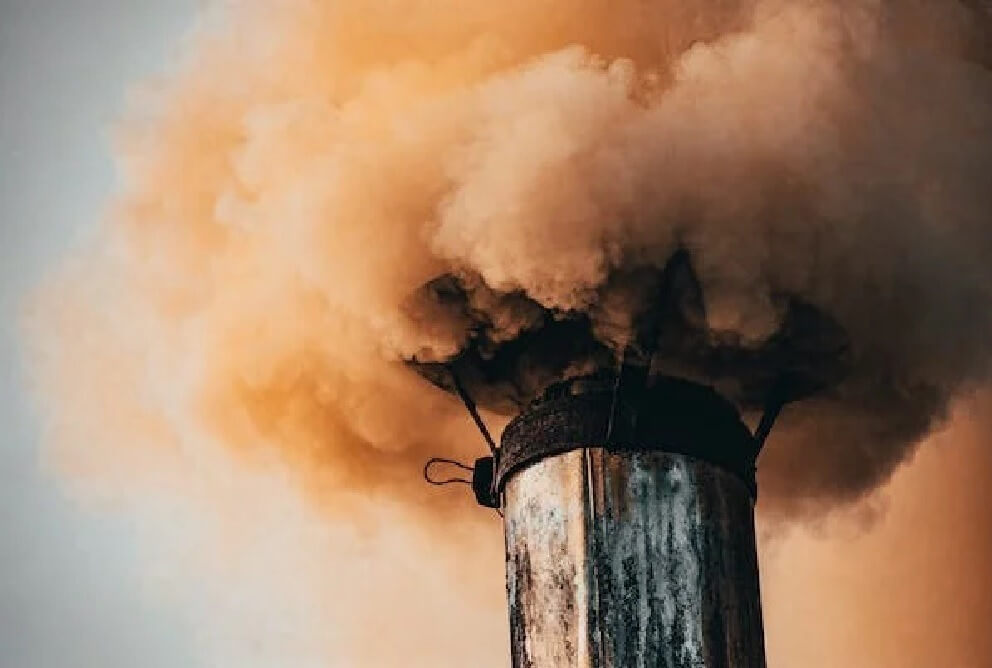



[…] What is global warming? […]
[…] Greenhouse Gas Emissions: Landfills and incineration of waste release methane and carbon dioxide, two potent greenhouse gases. These emissions contribute to global warming and climate change. […]
[…] leading to the release of vast amounts of fossil fuels into the atmosphere, which accelerates global warming. With the world’s population on the rise and living standards improving, there’s an […]
[…] Green technologies like solar and wind power can significantly reduce greenhouse gas emissions, contributing to a decrease in global warming. […]
[…] direct effects of our carbon footprint are climate change and global warming. Because greenhouse gases trap heat in the atmosphere, global temperatures are gradually rising. […]
[…] As a result, fossil fuels have become the main driver of today’s climate change crisis and its primary consequence, global warming. […]
Smartcric I’m often to blogging and i really appreciate your content. The article has actually peaks my interest. I’m going to bookmark your web site and maintain checking for brand spanking new information.